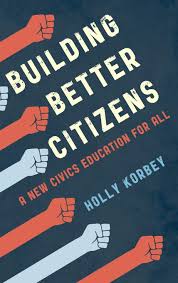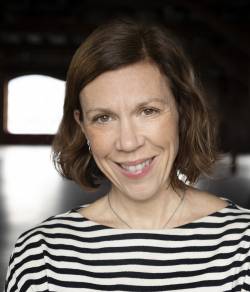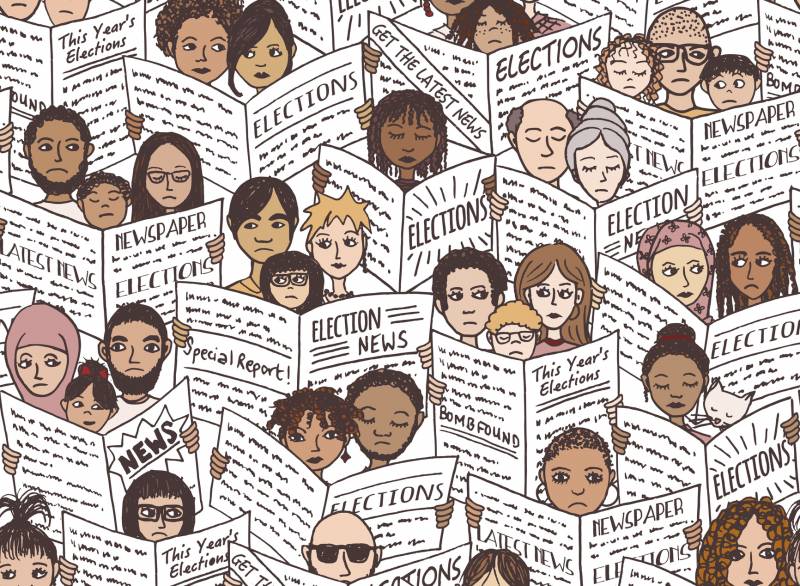Excerpted from Building Better Citizens: A New Civics Education for All by Holly Korbey.
A Twenty-first Century Guide to Politics in the Classroom
In a four-year study of classroom political discussions between 2005 and 2009, Diana Hess, dean of University of Wisconsin–Madison’s School of Education, and Paula McAvoy, assistant professor of Social Studies Education at the North Carolina State University, set out to examine what students learned from classroom political discussions, and whether those experiences influenced their future civic engagement and behavior. In addition, they wanted to study the teachers providing the “high quality” discussions to find out what they were doing right.
In their book about the research, The Political Classroom, Hess and McAvoy argue that schools, in order to fulfill their democratic mission, should be political (though not partisan). Political classrooms “seek to teach young people to see each other as political equals and to inculcate them into the practice of reason-giving and considering how their views and behaviors affect others.” In political classrooms, students learn how to discuss topics that have multiple, competing views, and practice listening and questioning.
Creating the kind of political classrooms and democratic education that students need has always been difficult, but is now even more so in our current highly polarized climate. McAvoy and Hess note that often teachers choose to avoid having political discussions in classes that are teaching the lessons of politics (like history, government, and civics) because facilitating talks about controversial topics is full of pedagogical challenges—navigating students’ family cultural and religious values, the polarized political climate outside of school, and the fear of parent backlash all make creating a positive environment for political discussions much more difficult.
Teachers are also wary—rightfully—of how their attitudes and personal opinions can influence the developing ideas of impressionable young people, and must also be aware that students have more first amendment rights to free speech than they do as state employees. “Teachers are in a position of authority and can dramatically affect the life prospects of students [who] understandably will self-censor to avoid offending the person who controls their grade,” wrote political science professor Joshua Dunn at University of Colorado Colorado Springs in the upcoming essay collection Talking Out of Turn: Teacher Speech for Hire. All around, classroom political discussions can be fraught with minefields.
But that shouldn’t discourage teachers from holding political discussions in class. When done well, Hess and McAvoy argue, allowing students to talk to each other about controversial topics has the potential to increase civic knowledge, skills, and dispositions that lead to adult civic engagement. The key to creating a positive environment for discussion, they found, was guidance by a well-prepared and knowledgeable teacher.
Best Practice Educators
To find out what was happening inside classrooms where students learned the most from discussing controversial topics, McAvoy and Hess studied the work of 35 social studies, history, and government educators, some that used curriculum that focused on deliberation of controversial political issues and some that taught lecture style. Then they compared the two types of teachers to see how they engaged students and what students learned.
All of the teachers they studied had quite a bit of teaching experience, and the majority had degrees in history or political science. Out of this group, the researchers found 10 to 12 teachers they labeled “Best Practice teachers,” who conducted political discussions where students learned a lot and later showed indications of increased civic knowledge and engagement. These Best Practice educators held discussions of controversial topics at least once a week in class, were all politically aware and engaged themselves, and often shared that knowledge and enthusiasm with their students.
McAvoy said in an interview that Best Practice teachers also had a lot of support and professional development to learn how to conduct classroom political discussions. Teachers sometimes assume, McAvoy said, that classroom discussions don’t require much preparation upfront, but the opposite is true. Good discussions have lots of upfront preparation, including the teacher creating discussable questions, students reading something in advance, incorporating discussions into a unit of study, and educators making sure that students are talking to each other, not the teacher.
Surprise discussions sprung on students can go off the rails quickly. “If the Monday morning after the Charlottesville riots a teacher just walks into her classroom and asks the students, ‘Well, what did you guys think of that?’ That’s going to be a disaster,” McAvoy said. An open discussion right after a tragic event, with questions like “how do you feel about this situation?” or “do you have questions?” allows students to process—but it’s not the time to debate free speech, or what to do about monuments. “If you let kids just shoot from the hip, it will be divisive and will allow students to just state their biases and their prejudices without any guidance,” McAvoy notes. Using discussion strategies like role-playing, supporting statements with text and research, and student understanding of knowing how and when they are supposed to participate will make a discussion more productive and effective.
Best Practice teachers also know how to push student thinking, especially if, like many American schools today that are “sorted” into more like-minded groups, the class mostly agrees with one another on certain topics. In their book, McAvoy and Hess describe how social studies teacher Joel Kushner at Academy High School plays “devil’s advocate” to his left-leaning students on topics like abortion, trying to nudge them to understand the pro-life point of view and see there are reasonable competing ideas on both sides of the issue. Kushner said,
With abortion, I try to make the arguments as best I can. I divide it up: today is the pro-choice view, today is the pro-life view, and I get the strongest arguments I can. I think Don Marquis has a good secular pro-life argument, and some of my very good students picked up on that. . . . So [some students] in the end were giving a pro-life argument and it was very interesting and got a little heated. So that’s what I do: I make the best arguments that I can, and I actually enjoy it. It’s a challenge for me.
McAvoy and Hess found that students who participated in well-planned, controversial political discussions benefitted in multiple ways. One big benefit was that discussions allowed students to realize, often for the first time, that their peers disagreed with them, a key part of being a citizen in a democracy. The researchers worry that the twenty-first-century polarized climate creates many more like-minded schools in which teachers and students see the world more or less the same way—a big problem for democracy.
For like-minded schools, encouraging discussions about opposing points of view becomes even more important. Students who practiced discussion also became more interested in politics in a social way, and shared political thoughts with family, friends, and coworkers. And perhaps most importantly, students who participated in Best Practice discussions were more likely to display the kind of interest in political activities—from reading the news to listening to people with different views to being more interested in politics in general—that predict future civic and political engagement.
McAvoy and Hess argue strongly for more classes serving a wider range of students to engage in the kind of deliberations that prepare young people for participating in democracy. “Democratic education requires teachers to create a political classroom in which young people develop the skills, knowledge, and dispositions that allow them to collectively make decisions about how we ought to live together,” they wrote.
Debate Team for the Twenty-first Century
In his first years as debate coach, high school English teacher Scott Wunn approached debate team in the same way he did when he coached wrestling: both wrestling and debate were competitions that required intense focus and fierce collective energy in order to win. They appeared to be individual competitions, but couldn’t be further from the truth—both fed off the energy and experience of the whole group. Both required resistance training and development of core skills to succeed. And in order to win a debate or a wrestling match, the opponent must not be ignored or circumvented, but overcome.
But in the 10 years he coached debate at a high school in Des Moines, Iowa, Wunn found the more he immersed himself in the team, the more he learned. Unlike wrestling matches, each academic debate was unique and brought new challenges—how to make a point, a counterpoint, how to support an argument—and Wunn found himself a more well-rounded thinker. His teaching practice improved, and so did his research skills.
 Helping students prepare to argue both sides of an assigned topic nuanced his worldview, providing Wunn with what he calls “a stronger understanding of the gray area of life.” Debate and wrestling weren’t as alike as he first thought, and he figured that the skills he was gaining must also be happening with his students. Over the years, a more complex view took shape regarding the skills that debate provided for kids, bigger than simply winning or losing a well-planned argument. Wunn noticed that debaters picked up crucial skills that colleges and businesses alike said they were looking for in young people, like the ability to collaborate with team members and think critically about a topic—often this happened not in the library but on their feet, responding to an opponent during a debate. The twenty-first-century skills making headlines were developed naturally during the process of researching, preparing, and participating in a debate.
Helping students prepare to argue both sides of an assigned topic nuanced his worldview, providing Wunn with what he calls “a stronger understanding of the gray area of life.” Debate and wrestling weren’t as alike as he first thought, and he figured that the skills he was gaining must also be happening with his students. Over the years, a more complex view took shape regarding the skills that debate provided for kids, bigger than simply winning or losing a well-planned argument. Wunn noticed that debaters picked up crucial skills that colleges and businesses alike said they were looking for in young people, like the ability to collaborate with team members and think critically about a topic—often this happened not in the library but on their feet, responding to an opponent during a debate. The twenty-first-century skills making headlines were developed naturally during the process of researching, preparing, and participating in a debate.
In addition, the new millennium brought digital technology to debate topics and gave debaters greater access to information than ever before. Access to the internet made student arguments more nuanced and more complex, the depth of analysis more robust. Information gave students power; debates at the turn of the new century, Wunn said, became much more real, and students found the immediacy of bringing current events scraped off the web into their debates intoxicating.
All of these collective factors put together have ignited a large debate revival, one that’s remodeled itself for the new century. Wunn became executive director of the National Speech and Debate Association in 2003, and began working to transform the association, adding 60,000 students nationwide to the association’s membership as well as adding a popular new category of debate that focuses on issues surrounding current events.
Under Wunn’s direction, an after-school club with a reputation for incubating future Alex P. Keatons—argumentative young men in nubucks and ties, interested in the intricacies of international policy—has opened its once-closed circle to increasing numbers of young women and people of color. The association hosts an annual national tournament with more than 3,000 students participating, and now sponsors a global debate team of 12 high schoolers that travel the world. They’ve qualified for the World Schools Debating Championship, what Wunn called the “Olympics” of debate.
Though Wunn has been working toward debate domination for more than 15 years, he said the biggest surge of interest has come in the last four or five as polarization has increased and political rhetoric in the public eye has gotten more heated. In debate, Wunn noted, debaters must be prepared to argue both sides of an issue in order to win, which he said gives them a piece currently missing from political conversations they might encounter on social media.
More educators have reached out to the group because they’re concerned about civic engagement skills and civil discourse, as well as teaching students the importance of face-to-face communication. It didn’t hurt that Parkland activist David Hogg kept referring to himself as a “debate nerd,” either. Every middle and high school in Broward County, Florida, where Parkland is located, has a debate program, and debate instruction begins in fourth grade. With a new category called Public Forum, Wunn has worked to make debate more classroom-friendly. Teachers can have two teams of two students debate a current event topic such as immigration or health care for 40 minutes and still have time left over for reflection and discussion.
Some have suggested that debate not be relegated to social studies class or an after-school club, but be integrated into every subject. Economist Robert Litan has argued for a “counterintuitive” solution to nationwide polarization and cable TV shouting matches: “debatify” more subjects, and allow students to treat other subjects—science, literature—with the same rigorous research and argumentation practices given to world politics and policies. Litan argues that debate isn’t only fun, but also provides a kind of resilience training for hearing other points of view.
Expanding debate’s reach isn’t easy, as it still remains largely an activity for whiter, wealthier kids. But recent research has shown the promise of debate in urban minority communities; in one 2011 study of the Chicago Urban Debate League, debaters were more likely “to graduate from high school, performed better on the ACT, and showed greater gains in cumulative GPA relative to similar comparison students,” even after researchers controlled for self-selection into the activity.
But Wunn wants to make debate even more inclusive. In Wunn’s perfect world, all young people, no matter their background, would be equipped with the skills debate provides—civil discourse and the ability to see and understand key arguments about both sides of pressing issues. Debaters don’t flinch when information is thrown at them, he said. They know how to use information, how to substantiate their arguments, how to understand the legitimate positions of all sides. To be citizens of the twenty-first century, to have the focus to overcome opponents, to win. Like the verbal version of wrestling—except with more informed citizens and a more equitable democracy as the prize at the end of a match.
 Holly Korbey is an education and parenting journalist and the author of Building Better Citizens. Her work has appeared in The Washington Post, The New York Times, The Atlantic, The Boston Globe, and others. She is a regular contributor on education for Edutopia and MindShift. Follow her on Twitter @hkorbey.
Holly Korbey is an education and parenting journalist and the author of Building Better Citizens. Her work has appeared in The Washington Post, The New York Times, The Atlantic, The Boston Globe, and others. She is a regular contributor on education for Edutopia and MindShift. Follow her on Twitter @hkorbey. 

